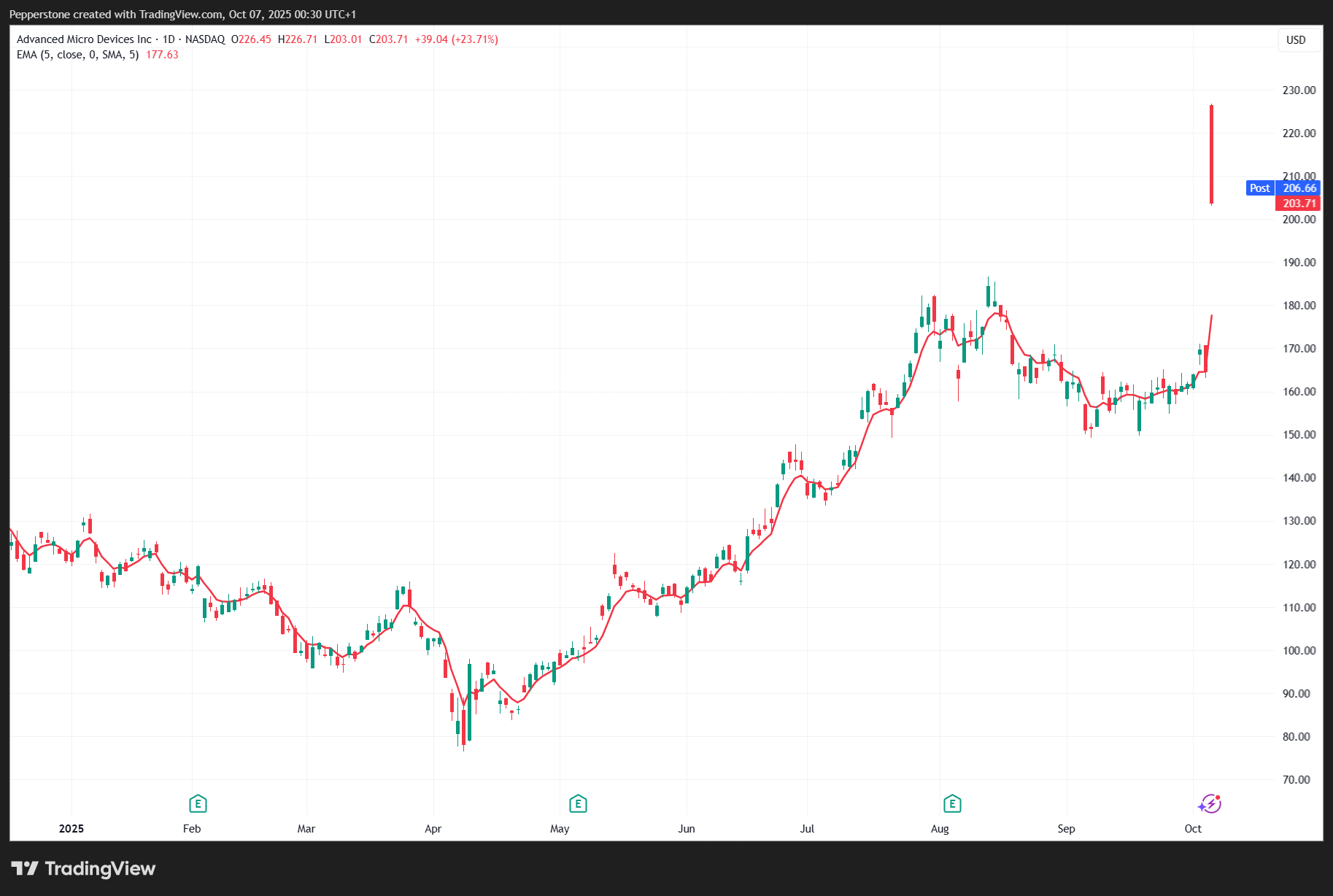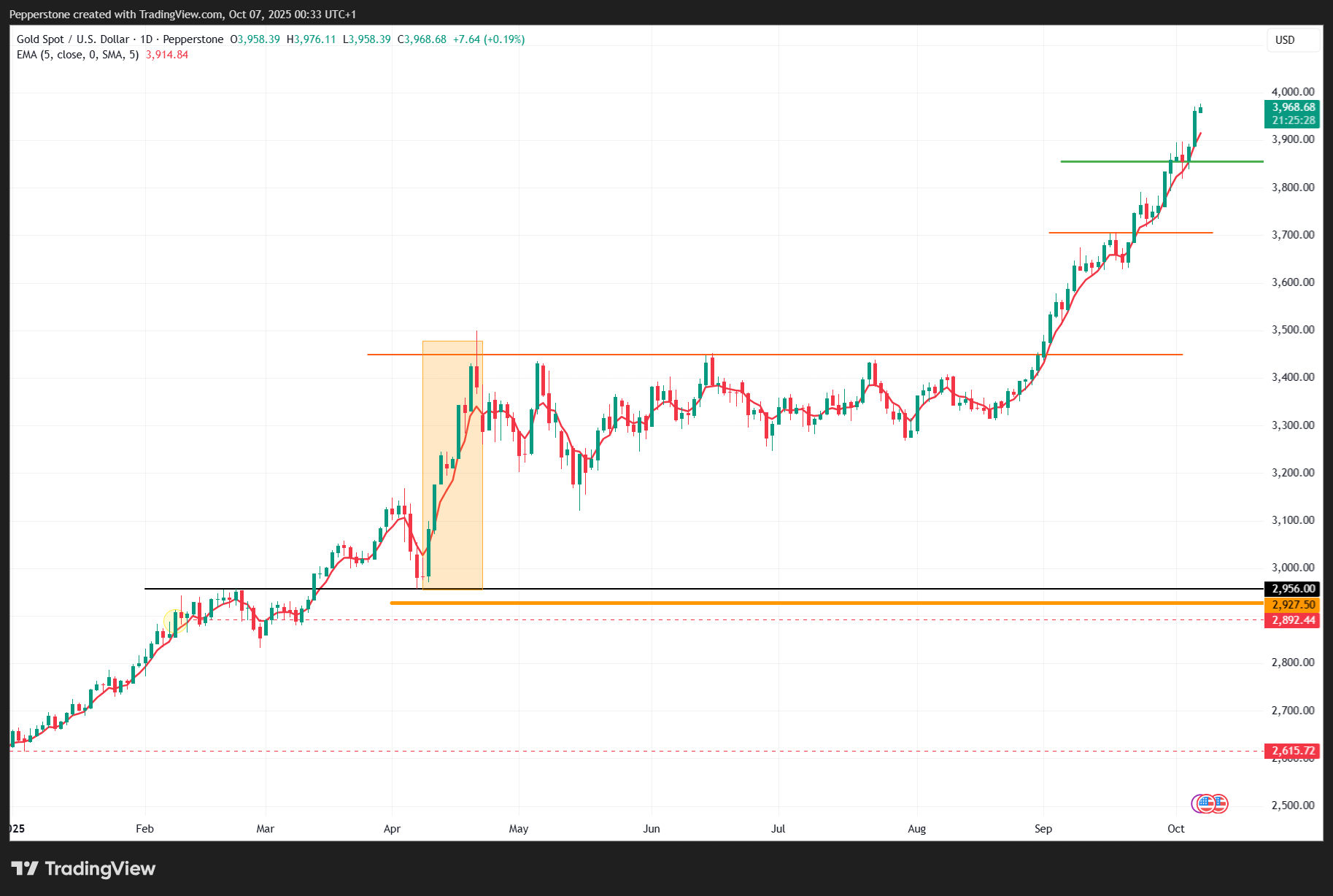- English
- عربي
Deficits, Fiscal Slippage & Debasement: What Gold, Silver, and Crypto Are Telling Us

There’s a strong message being articulated in these high-momentum markets that needs to be deciphered. Granted, we’ve seen targeted news flow — such as AMD strengthening its relationship with OpenAI, entering a multi-year deal that will net AMD a significant revenue boost from 2H26. AMD flew on the news, with many other semiconductor and AI-related plays also firing up.

But take a broader, cross-asset view, and the rallies across these high-momentum markets are just so powerful that those wanting to buy into pullbacks are becoming increasingly frustrated as price action keeps building and the tape just keeps going higher — and yet, it still doesn’t reek of a market exuding clear signs of FOMO.
Is this just a massive momentum chase? Certainly, the flows driving these markets are a major influence driving such strong momentum and need to be considered... While reports suggest institutional players are beefing up allocations within multi-asset portfolios, many of the entities pushing prices higher simply don’t care about fundamentals — they’re driven solely by the trajectory and the rate of change in price.

But there’s more to it than that. The S&P 500 cyclical-versus-defensive sector ratio is eyeing a breakout to its best levels since February. Concerns about the labour market remain, but US GDP is tracking well above 3%, and US financial conditions are about as loose as we’ve seen in years. And yet, the Fed remains biased to ease into this dynamic. Meanwhile, the Trump administration — rather than holding collected tariff receipts to reduce the deficit — gives the impression it will use those receipts to win voters and pump up the economy ahead of the midterms.
The real underlying takeaway from the US government shutdown hinges on whether Democrats and Republicans can agree on an extension of the soon-to-expire subsidies from the Affordable Care Act (ACA), which would ultimately lead to the government reopening. If the Democrats get the edge and the ACA subsidies are extended, it will not bode well for some of the larger $1 trillion-plus spending cuts - mostly related to healthcare cuts - identified to offset other major spending initiatives and reduce the deficit projections under the One Big Beautiful Bill Act (OBBBA).
And voilà — we start talking about a high-7% deficit-to-GDP ratio: hotter growth, but a market that sees the fiscal position slipping away. We also need to consider the Supreme Court’s upcoming decision on the legality of the IEEPA tariffs. Oral arguments for and against the legality will be presented on 5 November, and after a period of review, if the Court were to deem them illegal, that in itself could be a major volatility event for the market and one that heightens concerns around future deficit projections.
One could argue that fears of significant fiscal slippage, recklessness, and debasement are exactly what gold, silver, and Bitcoin have been articulating. Granted, much of gold’s move can be explained by EM central banks increasing gold as a percentage of their total reserve holdings, and by institutions re-weighting gold allocations within multi-asset portfolios. However, the growing perception of fiscal slippage and a loss of trust in money could easily explain the rise of these classic debasement hedges.
The move in equities is slightly different — earnings are on the rise, volatility is crushed, and deal news in the AI space is increasing in frequency. Equities are also seen as a hedge against inflation, but that may change if the bond market starts to echo the message being sent by gold, silver, and Bitcoin. If long-end US Treasury yields were to kick higher and trend with a stronger rate of change — with term premium at the heart of that move — then I’d hazard a guess that a market heavily short volatility could suddenly come alive.
Good luck to all.
The material provided here has not been prepared in accordance with legal requirements designed to promote the independence of investment research and as such is considered to be a marketing communication. Whilst it is not subject to any prohibition on dealing ahead of the dissemination of investment research we will not seek to take any advantage before providing it to our clients.
Pepperstone doesn’t represent that the material provided here is accurate, current or complete, and therefore shouldn’t be relied upon as such. The information, whether from a third party or not, isn’t to be considered as a recommendation; or an offer to buy or sell; or the solicitation of an offer to buy or sell any security, financial product or instrument; or to participate in any particular trading strategy. It does not take into account readers’ financial situation or investment objectives. We advise any readers of this content to seek their own advice. Without the approval of Pepperstone, reproduction or redistribution of this information isn’t permitted.